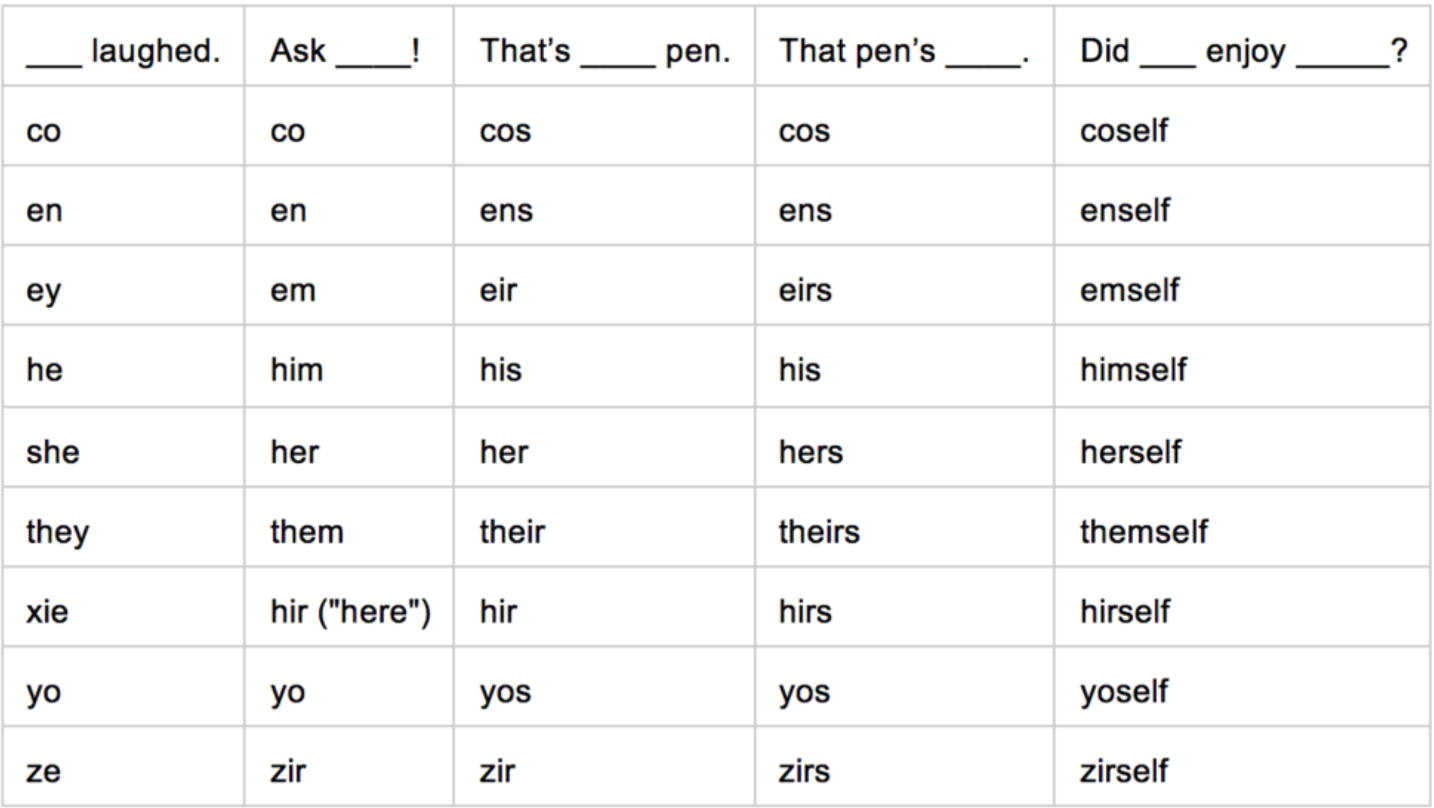Gender pronouns

Gender pronouns are words someone would like others to use when talking about or referring to them. They are almost like a replacement in a sentence for your name. The most common pronouns used are “he, him, his” and “she, her, hers”. When someone is transgender or gender nonconforming, they may prefer to use different pronouns, such as “they, them, theirs”. There are many other pronouns someone may choose to use – check the graphic below to see what some of them are.

If you are cisgender, which means your gender identity matches the sex you were assigned at birth (i.e. born a female and gender identity is female), you may have not given much thought to pronouns before. People can typically guess what a cisgender person’s pronouns are by looking at them. Not everybody has this privilege! People who are transgender or gender nonconforming may use pronouns that you wouldn’t guess just by looking at them.
The pronouns a person uses are an important part of their identity. For people who are transgender, the shift in pronouns can be an important part of their transition. So, how can you be supportive? Stating your own gender pronouns and asking for other people’s gender pronouns when you meet them is a great way to communicate that you are supportive of all identities. Once someone tells you their gender pronouns, try your best to remember what they are and use them appropriately.

Discussion (0)
There are no comments for this doc yet.
Comment posting has been disabled on this doc.